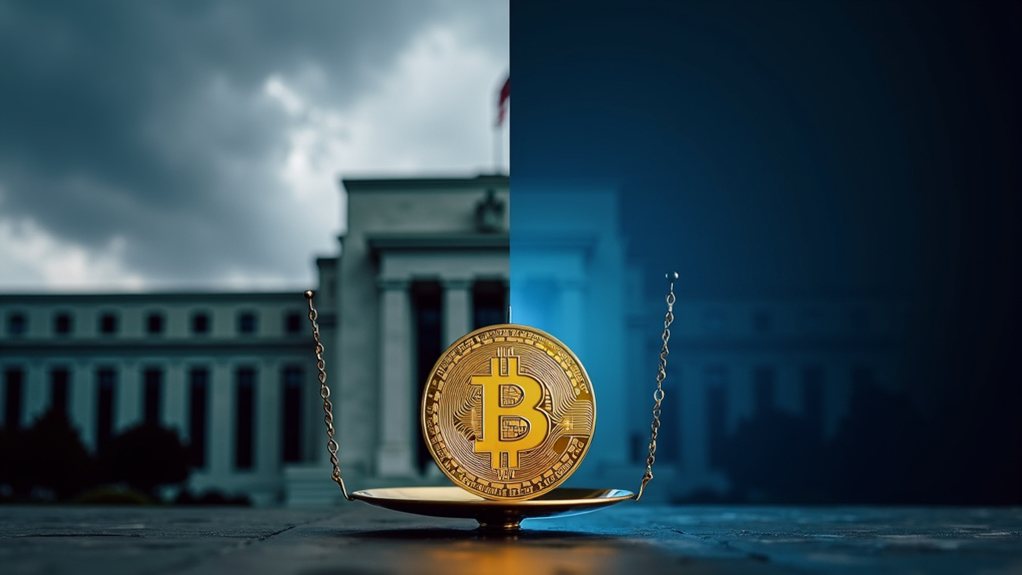The S&P 500 tumbled sharply into correction territory this week, marking a decline of at least 10% from its recent all-time high and triggering concerns among investors worldwide. This correction, defined technically as a 10% drop from peak levels, represents the latest in a series of notable market adjustments following comparable events in 2009, 2019, 2020, and 2022, when markets experienced substantial volatility.
The market’s sharp 10% decline echoes previous volatility events, adding another chapter to Wall Street’s ongoing correction saga.
Economic uncertainty, persistent inflation concerns, and policy unpredictability have coalesced to create downward pressure on equity valuations, pushing the benchmark index toward levels that historically signal caution. The persistent price declines reflect typical bear market characteristics seen throughout market cycles. Market analysts attribute much of the current turbulence to fears surrounding economic policies, particularly those associated with Donald Trump’s potential influence on international trade relationships.
Historical precedents demonstrate that presidential administrations can notably impact market dynamics through policy implementation, with tariff discussions and recession speculation currently weighing heavily on investor sentiment. The S&P 500 has already fallen 9% since Trump’s return, marking the worst start to a U.S. presidency since 2009. A further 10% decline from current levels would officially place the market in bear market territory. The global economic outlook remains precarious as market fear indexes reflect pronounced negative bias, further complicating the investment landscape for institutions and retail participants alike.
Bitcoin, often viewed as increasingly correlated with traditional equity markets, has concurrently experienced a substantial 30% decline from its recent peak. This parallel movement contradicts earlier narratives positioning cryptocurrency as a hedge against stock market fluctuations. Technical indicators, including the formation of a death cross in Bitcoin‘s price chart, suggest potential continuation of this downward trajectory, though historical correction patterns indicate possible rebounds following notable capitulation events.
The correlation between Bitcoin and the S&P 500 represents a complex relationship influenced by macroeconomic factors affecting both asset classes. Despite emerging decoupling trends, both markets continue responding in a comparable manner to global economic conditions, with investors increasingly categorizing Bitcoin among technology investments rather than safe-haven assets.
Market indicators such as the Coinbase Premium Index have historically signaled potential recovery phases following corrections, while derivatives markets maintain relative stability despite price volatility, suggesting balanced utilization positions among institutional participants.









